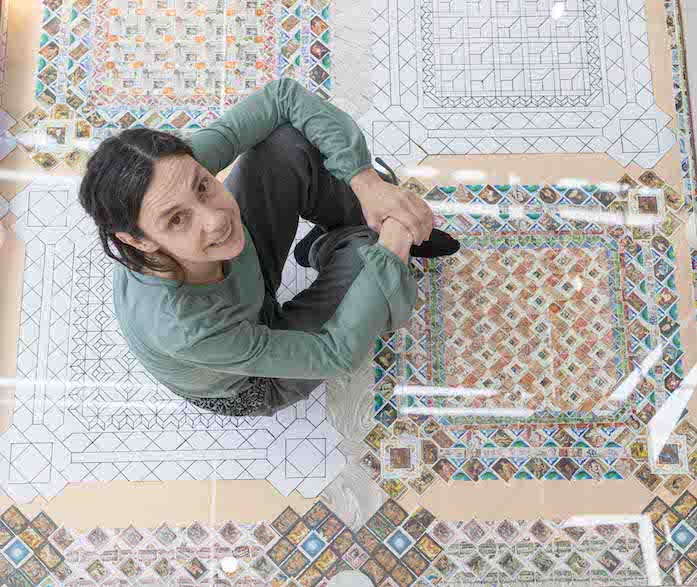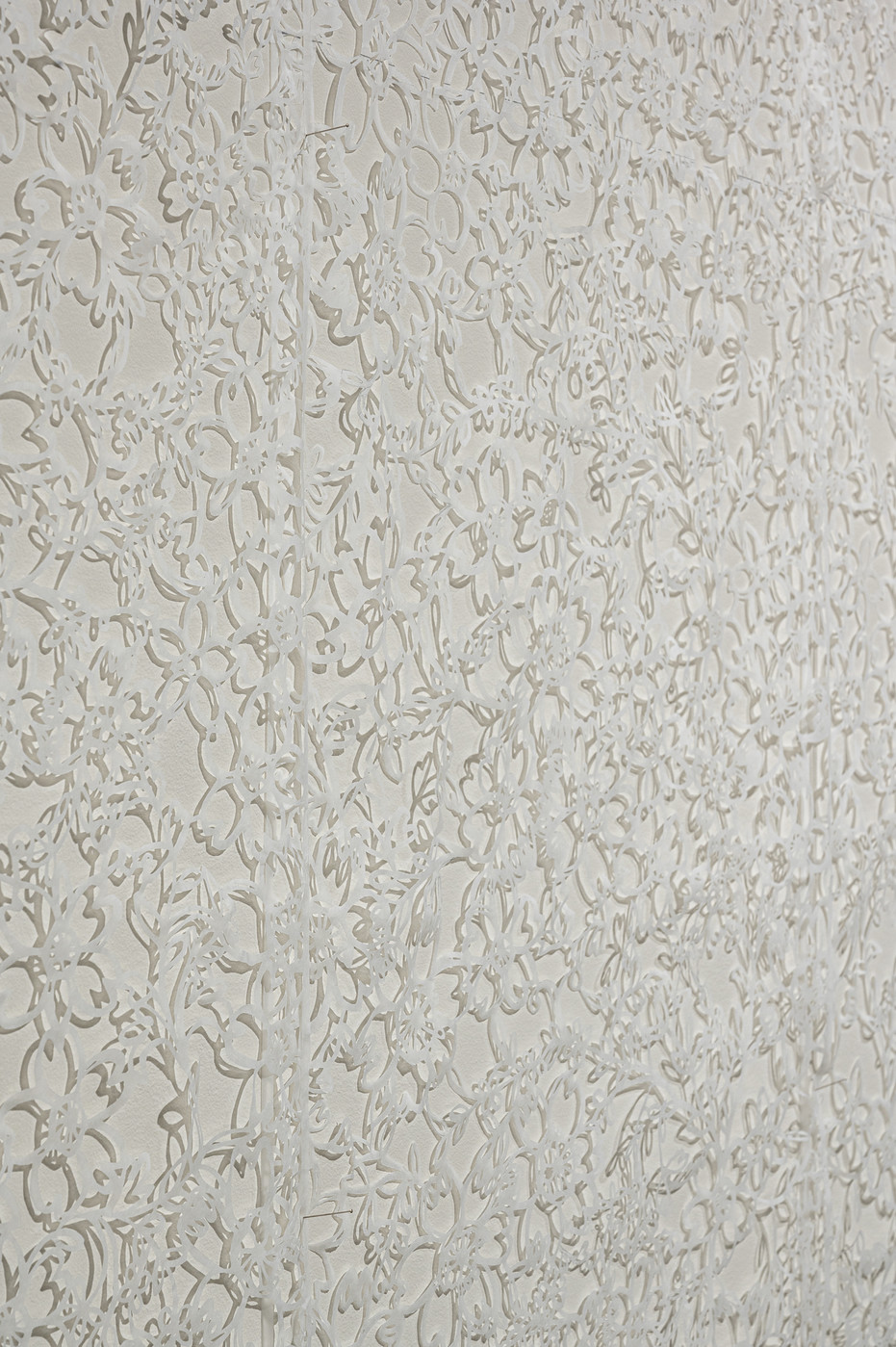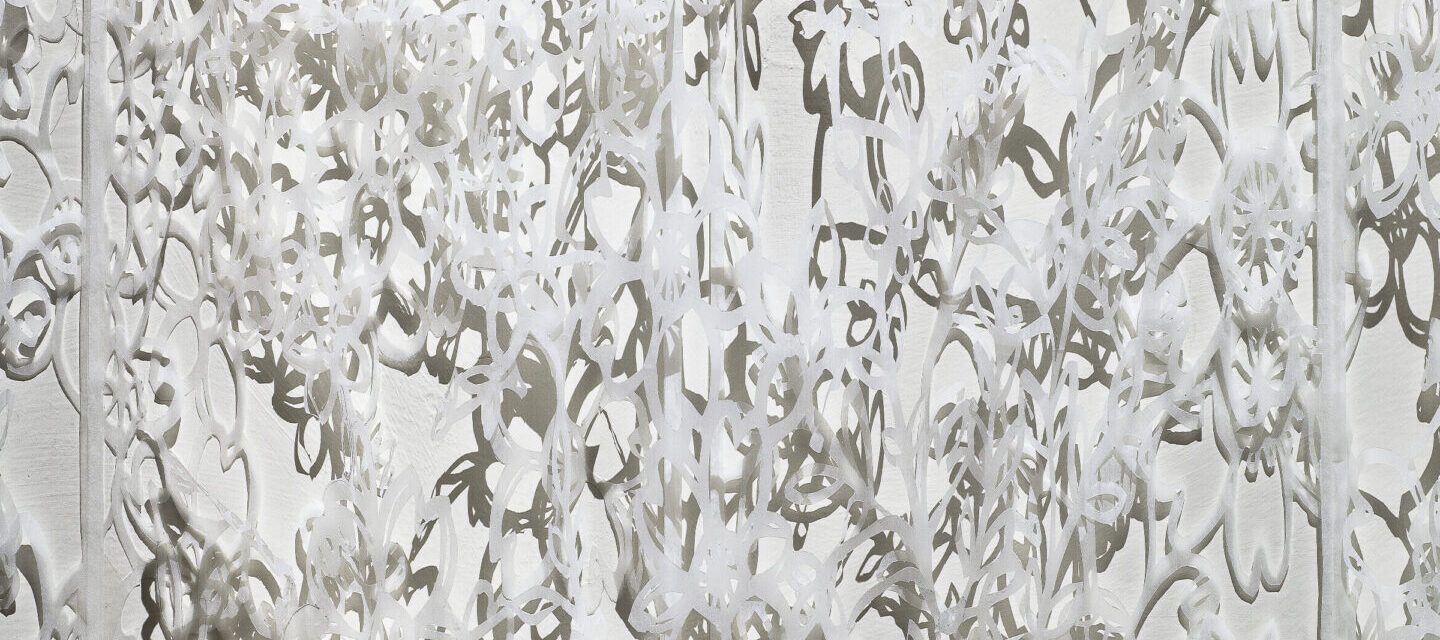The sixth installment of NMWA’s Women to Watch exhibition series, Paper Routes, was presented October 8–December 23, 2020, by the museum with the integral partnership of our national and international outreach committees. The exhibition showcases contemporary artists working in paper, celebrating their wide-ranging approaches and the transformation of this ubiquitous material into complex works of art.
Explore the exhibition online! Listen to an audio guide, watch studio tours with many participating artists, take an exhibition tour, purchase the catalogue, and more.

Elisabetta Di Maggio (b. 1964, Milan, Italy)
Nominating committee: Italy Committee
Consulting curator: Iolanda Ratti, Museo del Novecento
Di Maggio creates installations from cut wallpaper and tissue paper, often using surgical scalpels as her tool for their precision. Her ethereal works are reminiscent of embroidery or lace patterns. A versatile sculptor, Di Maggio has also created works from leaves, plaster, porcelain, postage stamps, and soap. The artist confronts the ideas of ephemerality and precariousness through her use of delicate materials.
The Artist’s Voice
“Paper is a fragile material that is also the support for a fundamental human activity: writing. The process of cutting and engraving paper and dedicating long hours of concentration to creating my works is like writing a diary. I tell my personal story, made of gestures and rituals, of the patient and anonymous work that unites us all, nourishing the life of every human being.”

Paper Routes: Women to Watch Highlight
The site-specific Wallpaper (2019–20) is made from large sheets of perforated paper, into which Di Maggio cut intricate floral patterns with a surgical scalpel. While the piece is affixed to the wall, some areas are arranged so that patterns emerge to create shadows on the wall behind it, giving the illusion of depth and texture. The panels cover the entire surface of a room, and form “transparent, veil-like walls,” as the artist described. The enveloping scale and monochrome whiteness of Wallpaper encourage viewers to analyze its intricate details, demonstrating that simple objects can be more complex than they seem.
